There are several different options available for sending email via Salesforce.
‘Send Email from Salesforce Servers’
If you’re not up for any integration at all, then sending emails from Salesforce, via the Salesforce servers, is the option for you.
The downside of this approach is that because emails derive from Salesforce’s servers and not your organisation, there is a risk that your recipient email servers will identify this and send your email to Spam folders. In practice, whether the email is flagged will depend on the recipient and how they treat email from generic sending domains, like those used by Salesforce.
Integration with Outlook 365 or Gmail
The other most popular alternative is to configure a Gmail or Office 365 integration for your users. Once this is set up at the organisation level, users will need to sign in to their email through Salesforce to connect their accounts.
The advantage of integration is that you can configure a sidebar inside Gmail/Outlook to associate emails from your inbox to Salesforce records. You can search for Contacts and Accounts straight from your email program and associate emails with them to build a comprehensive history of conversations with your customers.
Salesforce Inbox
Salesforce Inbox is an additionally chargeable solution that makes it easier for users to work with email on mobile devices. Leveraging the Outlook/Gmail integrations, Salesforce Inbox is essentially a smart email ‘client’ for mobile. Inbox brings another level of intelligence and will ‘read’ emails and provide helpful tags for surfacing important emails, like requests for pricing.
Save time by using templates, list emails and automation
Once you’ve configured email, you’ll be able to email straight out of Salesforce and, importantly, to start leveraging email templates. Email templates are a great way to reduce time spent on repetitive tasks (think ‘chaser’ emails or sales outreach emails!). Users can set up their own templates and leverage fields from the object that the email is being composed from, e.g. ‘Name’ fields from Contact records.
You can use Salesforce to send emails to groups of contacts or leads, via Campaigns and you can configure email alerts to be triggered when certain changes are made to your records or as part of a process. A practical example of this might be an email alert to a new customer when terms are authorised.
Triggering actions in Salesforce when new emails arrive
But what if you want to do something other than just associate a new inbound email with a record? For example, you might want to create a lead or a new support case when a new email is sent to one of your generic email addresses. Specific email ‘handlers’ can parse inbound emails and trigger the creation or update of one or more records, as well as alerts to users. Pretty much anything is possible!
It’s worth bearing in mind that your ability to do some of the above will depend on your version of Salesforce and your version of Outlook, so check these first before making a commitment!



